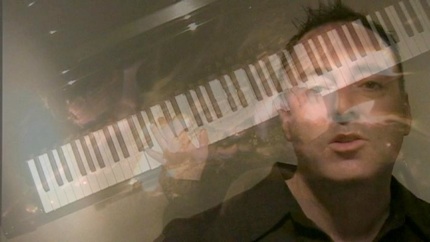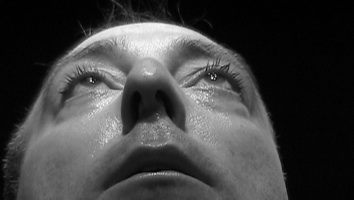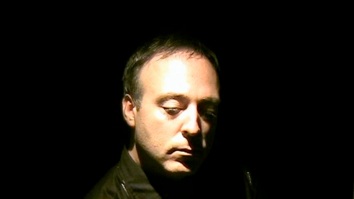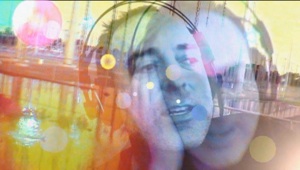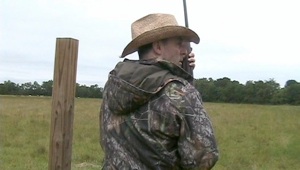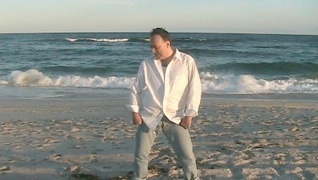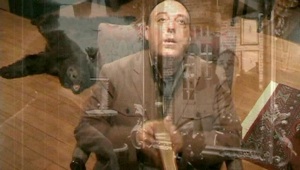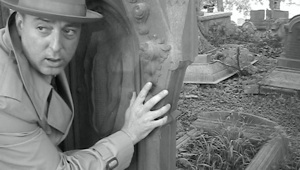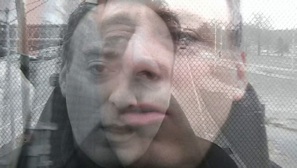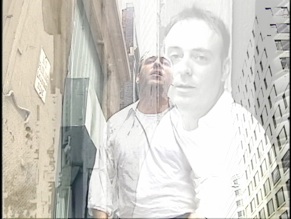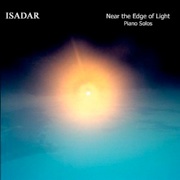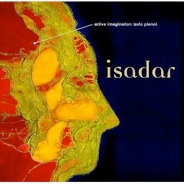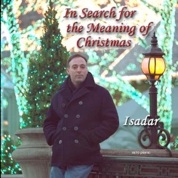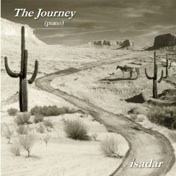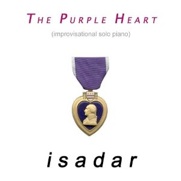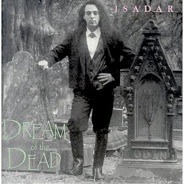One of the highlights of this past summer was finally meeting Isadar. I had written quite a few reviews for his music and songbooks over the past twelve years, but we had never met in person. We got to talking and decided it was time to do an interview. How did Fabian Thibodeaux become “Isadar” and what’s it like to have parallel recording careers as a pianist/composer and a vocalist doing music videos? We cover it all and much more below!
KP: You recently released four excellent DVDs of live performances of many of your piano solos. What else are you working on these days?
I: Thanks for your wonderful reviews! I recently released a bundled 6-disc set of my piano works, "Solo Piano Anthology: 1990-2010" which is a retrospective. I’m also getting artwork and packaging together for physical on-demand CD releases of all my previous albums. In the past few months, I ended a relationship with a long-time digital distributor, so getting everything back online is taking time. I'm also using this opportunity and time to remix and remaster two of my older vocal titles.
On the back burner are two projects that I started a few years ago. One is a new solo piano album, Red, and the other is a Christmas album, O Christmas. Both album covers are completed as is much of the music, but I have a long editing process ahead of me that seems impossible to begin, much less complete anytime soon. To move forward, I must have a Disklavier grand piano, and that isn’t in my near-future for various reasons, so it seems the piano music will have to wait at least another year or two.
KP: Tell us a bit about your early life.
I: I grew up in Louisiana and have two older brothers. The oldest is a church organist and choir director/piano teacher. My other brother, played saxophone in high school and studied piano as a child. Mom studied piano in her teens. Dad wasn’t a musician, but he was a magician. He had his own children’s television show in California performing his magic before moving back to Louisiana and meeting my mom. His dad (my grandfather) was a Cajun/French accordion player and had his own band. I recently released some archival recordings of his band on my label. It’s called Cajun Folk Songs by Howard & J.W. Thibodeaux. So the music gene comes from both sides of the family tree.
KP: Growing up near New Orleans, I would assume jazz has always been a very big part of your musical life. Have you spent a lot of time listening to Dixieland and gospel music?
I: I have never connected to any of the music I was exposed to while growing up in Louisiana. That goes for jazz, Cajun, zydeco, country, Dixieland, blues and gospel. I also don’t get rock music as a genre. The sound of an electric guitar has never appealed to me. I’m probably one of the few people in the world who does not like The Beatles.
KP: When did you start playing the piano?
I: I’ve been playing for as long as I can remember. My Mom and my two older brothers were playing the piano long before I came into the picture and it was always around me.
KP: When did you start piano lessons and how long did you take them?
I: Piano lessons started around the time I was five years old. My oldest brother initially taught me theory and keyboarding. He is nine years my senior and had already studied for more than ten years. He was advanced enough to have his own small business teaching piano as well as being the local church organist. I believe he had more than twenty students at the time, including me. Needless to say, we fought over piano time to practice between our studies and his students - when I actually practiced! I hated practicing and hated the music I was being forced to learn. Everything seemed so complicated and strict that I rebelled. After repeatedly being driven to tears by my brother’s hateful teaching style, my mom found me a different teacher in a nearby town. The guy was very strange, but he had a concert grand piano. Until then, I had never played anything but a spinet. I remember the first time I sat down and played Bach’s “Musette” (which I had learned for a recital) on it. The bass on those octaves resonated through my whole body. That was the first real conscious moment I had with a piano.
I really didn’t learn much from this new teacher. I learned much more when working with my brother. My Mom noticed this and found another teacher - same story. I just wasn’t interested in the game and the exercises. I was finally allowed to quit lessons and didn’t think much about the piano for about five years, other than the occasional school talent show and entertaining fellow band mates with the “Linus & Lucy”
Peanuts theme that Vince Guaraldi composed on the band room piano.
In 6th grade, we were asked if we wanted to join the school band. My brother had a trumpet, so I was forced to play the hand-me-down horn he was no longer using. I didn’t like it, but the band director loved me since I already knew how to read music and she knew I was much more advanced than the other students. I liked band only because I could leave 6th grade for an hour each day and head over to the high school. Eventually, I switched to the flute and was able to persuade my parents to purchase a really nice semi-pro version (I still have it). I moved on to piccolo during marching season, which led to becoming drum major.
Flute was a very big deal for me and it became my music partner. I instinctively developed a great tone and vibrato. I eventually worked up to Bach’s “Badinerie,” which became my signature piece and that I played in every competition imaginable. My brother often accompanied me on piano. We were intuitively in synch because we knew each other’s musical instincts and language so well. It’s the only time I’ve ever really enjoyed performing with anyone else, and I frequently placed first when competing with that piece. I love the melody and the energy of it! I’ve always been drawn to music in minor keys, but somehow this piece still manages to maintain a bright and optimistic mood despite the key signature.
During my junior year, I fell in love with the sound of the oboe after hearing it played at a Christmas service my brother orchestrated for midnight mass. I decided that I wanted to try it and advanced quickly enough to go to festivals on that instrument as well. I played it in the orchestra for a short time during college.
Also as a junior, my high school English teacher asked me to be the piano accompanist for a musical she was planning. I was very reluctant to even try as I knew I couldn’t sight-read well and I was pretty sure the score was going to be a complex condensed orchestra score. I was right - it was a nightmare! She had to hire a college student to play for the shows, but trying to play the score sparked an unconscious shift to the piano.
At the end of my junior year, I had a confrontation with our new band director and decided to change schools. I graduated from a Catholic high school twenty miles away that had no music program, but hindsight proved this to be a catalyst.
Without a music program, I was left to my own devices. During this time, I discovered synthesizers. But the real catalyst for me was a retreat the seniors had to make to the woods near Covington, Louisiana. There was a chapel with a nice upright piano. I had never played a piano in church as most Catholic churches at that time had pipe organs. The acoustics of that piano sent goose bumps along my neck. I’d sneak into the chapel to be alone and play the piano as often as I could that week. I have never been a very social person, so that piano became my escape. During lunch on the last day, a few friends found my hide-away and listened to me play. Since they’d known me for less than a year, they didn’t know I’d been a life-long musician. I was taken by their reaction. I was just speaking a language I’d always known whereas they didn’t know anyone personally who could play music. It was the first time I realized that I had something different than most people.
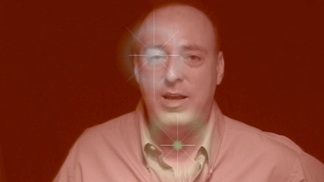
I continued studying piano in college, but it was too late since I was still in elementary levels of theory and sight-reading. I spent an entire semester working on the C Major Bach Invention! I eventually learned it, but it was completely through motor memory. That’s the way I’ve always learned pieces. Either I can play an entire piece from memory, or I can’t play it at all.
The advantage I had as a young kid visiting the college campus for music festivals became a handicap during my college years. ALL of the music professors expected my level of proficiency to at least match my brother’s. Not so! I was never interested in classical music - that was his thing.
My thing was electronics, synthesizers and recording studios. After a year as a music major, I finally convinced my parents to look at alternative schools. By this time, I was already working on my own compositions in 24-track studios and knew a traditional school was not for me. We found that Memphis State offered a commercial music program, but I was turned off by having to learn complicated jazz theories and harmonies. Then we looked at Berklee in Boston. I was accepted, but didn’t get a scholarship and couldn‘t afford the tuition. I learned that people related to high profile recording artists who were also trying to get scholarships had their demo tapes produced by professionals. It wasn’t fair, but I was relieved to learn that it was all a political game.
Since no college music program seemed to be in line with my goals and ambitions, I decided to go at it on my own. I switched majors from Music to General Studies and graduated from college as quickly as possible with an Associates Degree.
KP: What other musical instruments do you play?
I: I started out on piano, then trumpet, melodic percussion instruments (bells, xylophone, marimbas), flute, piccolo, then the oboe, and of course synths.
KP: Isadar is actually your middle name. Why did you choose that as your stage name?
I: At the time of my first album, I was advised that using “Fabian” could possibly lead to trademark infringement. I also didn’t like the idea that people would associate me and my music with the teen heartthrob from the 1950s. My last name, Thibodeaux - forget it! I’m lucky if people can pronounce it! I needed something simple that people could remember and that was unique so it could become my trademark. So I turned to my middle name, Isadore, which was my paternal grandfather’s first name. He was Cajun French so it was pronounced “Iz-ee-da.” When he started school, it was given an English pronunciation of “Isadar,” not “Isadore.” I thought my parents made this story up until I was out with them one day and this old man came up and started recounting stories about my grandfather, referring to him as Isadar! I wanted to preserve that pronunciation and changed the spelling to accommodate that effort. I also knew that by creating the spelling, it would never be a trademark issue. Twenty years later, I’ve totally embraced it and fondly refer to it as “Izzy.”
KP: You’ve had a couple of parallel musical careers going on for a long time - one as a solo pianist and one as a singer/songwriter. How has that evolved?
I: I started out as a “singer/songwriter,” although I’ve always felt that’s a poor description. I see myself more as a recording artist, a one-man band - even though I AM singing, and I DID write the songs. “Singer/songwriter” seems to be a specific genre that I’m so far from stylistically.
I had years of studio experience playing the piano in my vocal recordings long before I ever set out to compose anything strictly for solo piano. That experience made it much easier when it came time for production of my piano music. I already knew what effects to use, how to place the mics, and how to mix it.
KP: Do you have a preference of one genre over the other?
I: I really prefer making my vocal music. It’s much more challenging and interesting to make. So many palettes of sound, texture, and effects to work with - not to mention taking the music to the next level with remixing, music videos and visuals.
Solo piano is always challenging for me - it’s like singing one note. That’s why I’m so careful going forward with what I release - it all starts to sound the same to me. It’s also one of the reasons it’s taking me so long to get this new album together. I need time to go by so that my way of composing and playing evolves into something new and will hopefully have something interesting to say that’s not what I’ve already said on the first five albums.
KP: I would imagine that improvisation is a very big part of your musical style.
I: You are correct. Improvisation is the root of my entire creative process. The analogy for me is like telling a story, but instead of a literal subject, I’m communicating feelings through the music. As much as you might get bored repeatedly recounting a story about taking a walk to the store and what might have happened along your way - every time I tell the story it's always different - I might remember nuances that I didn’t remember yesterday telling someone else. In the end, you want the person to get the gist of what really happened along the way, yet there are countless ways of communicating this idea.
When I first began writing music, I used to hear completely produced songs in my head. Then I’d spend so much of my energy and time trying to bring them to life perfectly and exactly. In the end, none of those ideas ever came close to match the beauty I heard originally. They became something else instead. So, these attempts only frustrated me and made me feel like a failure.
Now, every aspect is simply improvised. Then once it starts to take some shape and form, my task is to try to make it as technically sound as best I can from a performance and production standpoint. I enjoy working this way - I have no expectations so I’m never disappointed with the outcome. I can also surprise myself quite a bit along the way.
KP: How many CDs have you released?
I: Fifteen - five solo piano albums, a piano sampler, and a box set piano anthology; six vocal, a vocal sampler, and an electronic instrumental album.
KP: We first became acquainted when you sent Active Imagination to the print version of Wind & Wire for review in about 1998. That’s still one of my all-time favorite albums, by the way! You also sent me Dream of the Dead, which was entirely different. That was an enormous project and you had some major plans for it. Is that something you’re still working on?
I: I’m so glad you still enjoy
Active Imagination! I’m always thrilled to know when some of my work creeps into people’s consciousness, or at the very least their CD collections.
In reference to
Dream Of The Dead, I had three definite ideas for the album. The first was to perform it as a ‘performance-art’ stadium concert. I was inspired by the stage work of performance artist, Laurie Anderson. Of course, I’ve dismissed anything like that happening with
Dream of the Dead. That’s beyond any means or reasons I’d have to present it publicly.
The second idea was to turn the album into a film - also very ambitious and incredibly expensive. But I composed the album with the intent to one day realize that project, unaware of the actual budget required. It’s not obvious, but there was a reason to my madness throughout the journey of that record. It has an arc and tells a definite story.
The third idea was to carve out music videos from the film in order to promote the album and the film. Recently, I realized part of this idea, although it’s not what I had intended from a creative aspect.
Right after I finished my last album (
The Omega Point) in early 2008, I started producing and directing my own music videos. I had begun to realize the impact YouTube was having on entertainment and knew I’d have an outlet to get the videos shown. To date, I’ve created 75 of them and they span repertoire from every album I’ve released over the past twenty years. I don’t think any artist, major or indie, has made as many! I’m extremely proud of this work - especially knowing the conditions, equipment, and technology I used to make them. I spent just a few dollars making these videos and some of them look incredibly expensive. I handled every aspect of production - there was no one there but me - just like how I make my music.
Of the 75 videos, five came from
Dream of the Dead. The concepts were modified to better fit my means of production than staying true to the motion picture script I had in mind. I knew these clips were not going to be experienced linearly like in a film, so I concentrated on a mood or atmosphere that fit each best. The exception was the title track. I stayed pretty close to the original story board because it was the centerpiece of the album.
KP: Tell us a bit about that project and the story behind the work itself.
I: Believe it or not, the title, Dream of the Dead was taken from a children’s book that I read in 3rd grade. My story and the plot of the book have nothing to do with one another, though. The gist of the album is that it’s all a dream that the narrator experiences. He is taken on a journey of self-exploration and realization and is forced to look at both positive and negative aspects of himself. When he awakens at the end, he understands how much he‘s grown and that he is no longer the guy in that dream. There are also “scenes” of being visited by the ghosts and spirits of people he knew and loved. These evoke bittersweet memories during the process that help in his clarity and understanding.
Eventually, I got to the point where I simply could not continue to work on the album due to studio limitations and, ultimately, funds. So out of my frustration, I turned to the piano and figured I would continue concentrating on songwriting for future production. I began to write music that felt impossible to add lyrics to and seemed to be little works on their own. These compositions were the early versions of what became Near the Edge of Light. The more I played them, the more I gave into the Windham Hill-ish vibe they were emulating to me.
By 1990, I had several years of professional studio production under my belt and knew how easy it would be to put together a solo piano album. I was really torn because I felt like I was abandoning Dream of the Dead, but I was determined to get an album out that year. I felt pressure from myself and from people who knew I had been working on “something” for years.
I finally scraped up enough money to pay for a day’s worth of piano recording. It went really well, but then I needed the money to professionally master it and get CD and audio cassettes duplicated. I took out a loan to cover those expenses.
The album was well-received and played on local radio. I gave two big concerts at the auditorium of the music college with a nice turn-out. Sales of the CD and cassette were disappointing, however. I had planned to not only recoup the money to pay off the loan, but to also finance the completion of Dream of the Dead. That didn’t happen and almost bankrupted me.
KP: Who and what do you consider to be your biggest musical influences?
I: No doubt, Kate Bush. I first heard her in 1982 when I was in the 8th grade. Her album,
The Dreaming was very dark, emotional, and like nothing I had ever seen (album cover) or heard before. It seriously blew my mind, and I found it very disturbing, which was part of the appeal. This was her 4th studio album, so she was in her prime, in control, and knew exactly what she was doing. US radio simply could not fit her music into any format. She was and is a huge star everywhere else in the world and has done groundbreaking and breathtaking work. Her only hint at success in the US has been her 1985 Top 40 hit, “Running Up That Hill (A Deal With God).”
Years later, on my way home from an all-day recording session, I turned the car radio to PBS and they were playing the most beautiful piece of music I have ever heard. It was solo piano. I had never heard a piano played like that and it caught me off guard. As soon as I got home, I called the DJ at the station and asked what I had heard. The best he could tell me was that it might have been a Windham Hill sampler called
A Winter’s Solstice.
The next day, I went to Musicland and bought it blindly. Sure enough, I found the track - “Greensleeves.” The liner notes said, “Traditional, arranged by Liz Story.” I still didn’t really know who was playing, but I remembered seeing a CD or two by Liz Story, so I bought those later on hoping they would make it clear who was performing “Greensleeves.” After listening to the playing style of the two CDs, I was convinced that she was indeed the performer.
KP: What has been your best-selling album so far?
I: My best-selling album to date actually has nothing to do with anything I composed. It’s a collection of recordings I made of antique music boxes that were manufactured from 1891-1916. After that, the cylinder and Victrola phonographs made these boxes impractical to reproduce. My brother had an interest in collecting an assortment of these pieces and invested a lot of time in selecting disks that are played on these massive boxes. It all started in December 1998 when I was wrapping up the recording sessions for Active Imagination and In Search For The Meaning Of Christmas. I thought it might be interesting to record a few Christmas music box disks to possibly use to segue between compositions on my Christmas piano album. That didn’t work out, so I sat on those recordings for a few years.
When I bought a home computer and recording software in 2000, I rediscovered these recordings and decided to compile them into their own album, Regina Music Box: Memories Of Christmas. I got the idea from a very old recording I had heard as a child.
In a nutshell, this album sold so well that I decided to revisit recording my brother’s collection. Over the years, he kept building the number of songs and the assortment of boxes he owned. He also became quite skilled at maintaining and tuning their sound combs. We took our time and crisply recorded over 375 different compositions.
The results were a 6-CD box set that I released called Antique Music Box Collection. All tracks are in alphabetical order, with a dedicated disc of only Christmas tunes. Some of the compositions had never been recorded before and the collection includes a lot of early American composers. Without these recordings, a lot of this music would have been lost forever. I feel good about preserving these works.
As far as my own music, Active Imagination has been the biggest seller. I attribute this to the fact that I took out a full-color ad inside the front cover of NAV magazine to promote it in early 1999. A track from it was also included on a CD sampler enclosed in the magazine and I assume radio stations picked up on it.
KP: You also have recordings of your music that are playable on Yamaha Disklavier pianos. How does that technology work? How do you make those recordings?
I: It’s complicated and partially why the two new albums are taking a long time to make. Since 2000, I’ve recorded my piano albums through .MIDI pianos or Disklaviers in order to capture the framework of the compositions prior to making the actual recordings. This adds an extra step, but also gives me flexibility with editing and correcting missed notes or even radical arrangement changes. Sometimes I might really nail a piece emotionally, but miss that E flat on the last chord, or something minor. This fixes those issues and allows me to change tempos - even change keys - before making my master. I also have the framework of the performances that can be reproduced on any of these modern day player-pianos or any other technology that becomes available or is invented in the future. Furthermore, I can make recordings of the performances on different pianos, giving me flexibility from a production standpoint.
It also gives me a different market to target with an additional product. Yamaha has a very limited catalog of “new-age” style music software - most of their stuff is Broadway, showtunes and classical. People who own these pianos and like contemporary piano music enjoy having this software and having my music on disks. For the customer, it’s like my ghost is giving a private concert in their home. These pianos are also located in grand hotels, shopping malls, airports, and bars and restaurants. When I’m long gone from this Earth, people will have the opportunity to sit next to a piano and actually hear me give a performance of my music!
The Yamaha Disklavier system is the ultimate. They have perfected playback and recording to the nth degree. Their pianos are built around laser accurate components - NOT the other way around.
KP: You recently started performing live again after a very long time. In fact, your re-debut was at a house concert at my house with Rebecca Oswald in July. Why did you stop performing?
I: There are two reasons. One, I am not a big fan of performing. It’s like flying on an airplane. I don’t like doing it, but once I do it a couple of times, I get used to the idea. Then it’s no big deal. But if I don’t fly for a long time, I get the same anxious feelings boarding that plane.
Two, performing takes a lot of effort in promoting the event, finding a venue, and getting your chops up. It’s a huge time investment, and since I already have a full-time job and I’m not really big on performing to begin with, I would rather spend that time making new music. I guess I don’t really need feedback from an audience to make my music complete. I realize that a lot of artists have a great desire to share their music and get this fuzzy warm feeling from it - a ‘high’ like a drug. In fact, for some, that’s the entire motivation for doing what they do - to perform in front of an audience. I don’t really care what people think, I don’t need or want the attention, and quite frankly, an audience offers me nothing in return for the vast amount of energy I‘m putting forth to make a performance happen.
KP: I think the concert with you and Rebecca was one of the most exciting house concerts we’ve had. You have very different backgrounds and styles, but you were both very evenly matched pianistically, and the contrasts were absolutely wonderful! After that, you did a couple of concerts at Joe Bongiorno’s Piano Haven near Seattle. Do you have more live performances planned?
I: Thanks for saying that! I really enjoyed sharing the performances with Rebecca, Joe and Tim Neumark. I’ve always had the pressure of doing a concert by myself, so it was nice to turn the piano over to someone else during the process. I don’t have any concerts planned at this time. I don't generally seek to plan concerts, but I am always open to events already planned that I can piggy-back my participation. I would like to do a concert with Lisa Downing and have mentioned this to her. I absolutely love her music! We were both influenced by Liz Story which I think is obvious in our styles. Of course, I couldn’t say “no” to an offer to share a performance with Ms. Story herself. That would be a complete honor.
KP: Has working in the music industry at a major record label helped you make some inside contacts?
I: Yes, and no. In my role, I’ve seen pretty much any and all legal situations imaginable. To me it was like grad school for the music business when I first started. Someone else might have socially worked their way through every possible niche and clique of social status inside the building, but that’s not my personality. Many people know the dual role I play as employee and indie artist, and I’m not alone.
I had some interesting meetings with A&R people when I first started. The music business was a completely different animal at that time, though. I was eager to get their feedback on my work and was trying to get a recording contract, which was my motivation for moving to NYC from Louisiana in the first place. I’ve learned that everyone has an opinion, and unless it matches yours and aligns with your goals, it really doesn’t amount to much. Over the years, I’ve realized that the music business wasn’t designed for what I do as an artist. It was hard, but I had to accept this fact and forget about getting an advance and a deal to further my work. I had to come up with my own plan. Luckily, the internet was right around the corner, and luckier yet, YouTube’s debut.
Many thanks to Isadar for sharing so much with us! For more information and to hear samples of his music, be sure to visit
his website or check out his
Artist Page here on MainlyPiano.com.
Click here to go to Isadar’s YouTube page.
Kathy Parsons
October 2010

